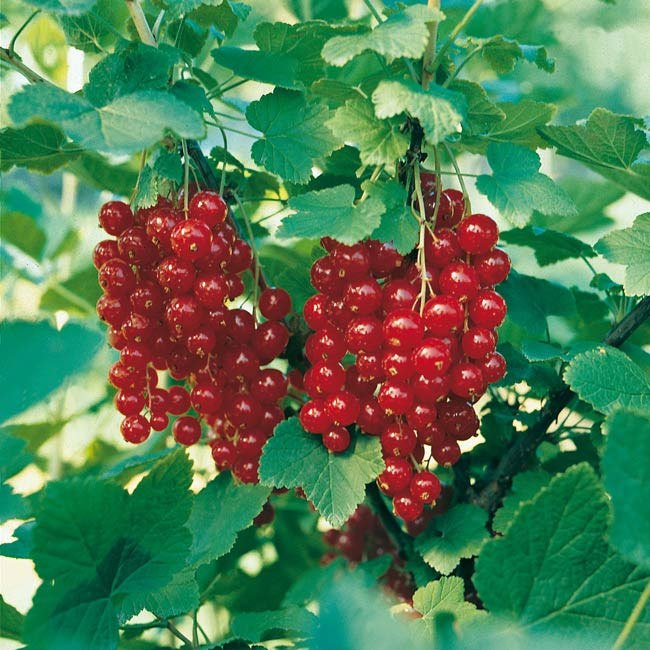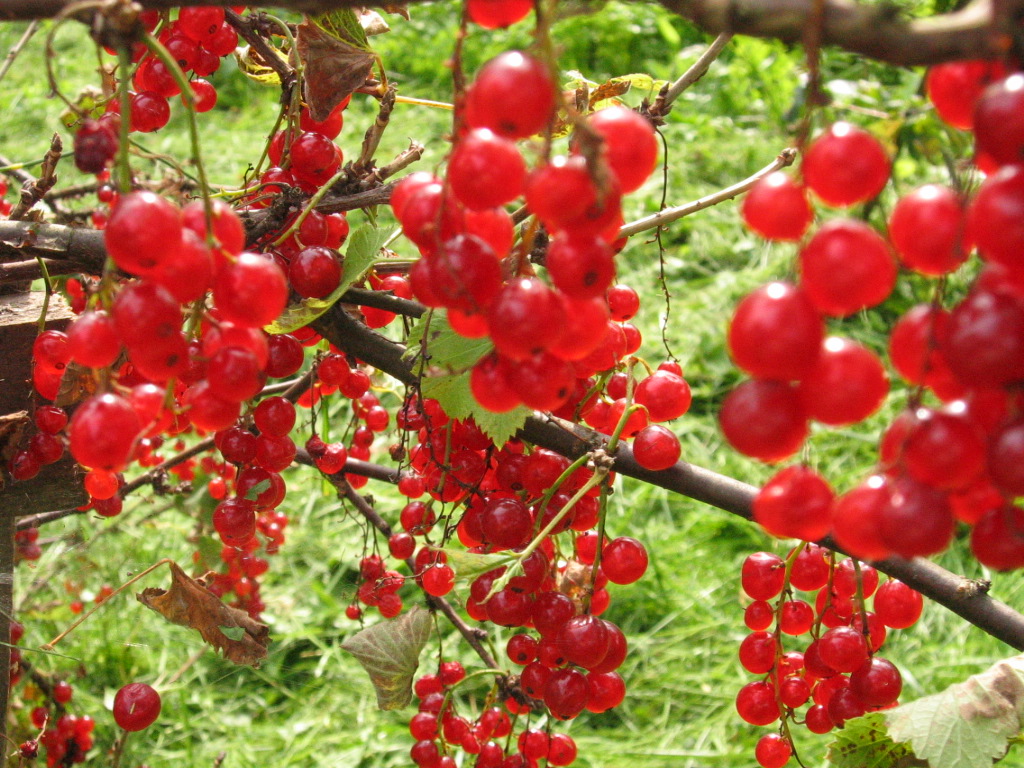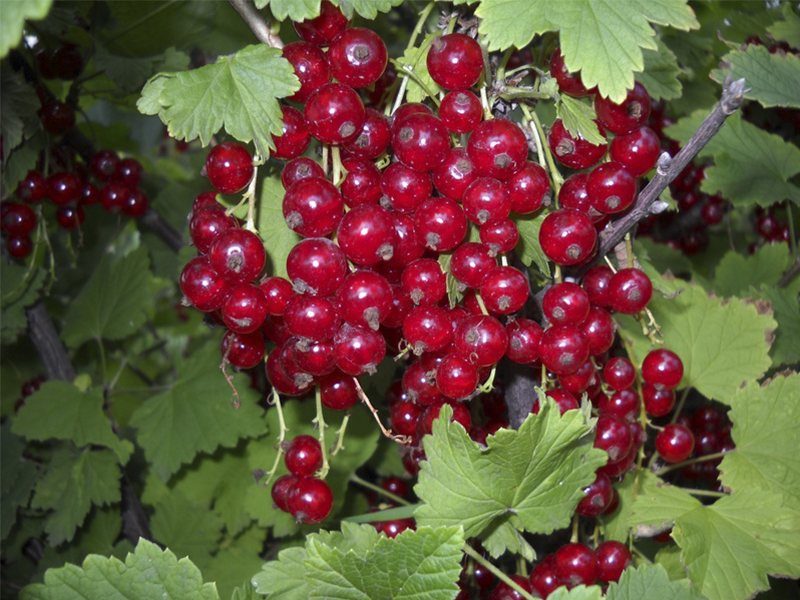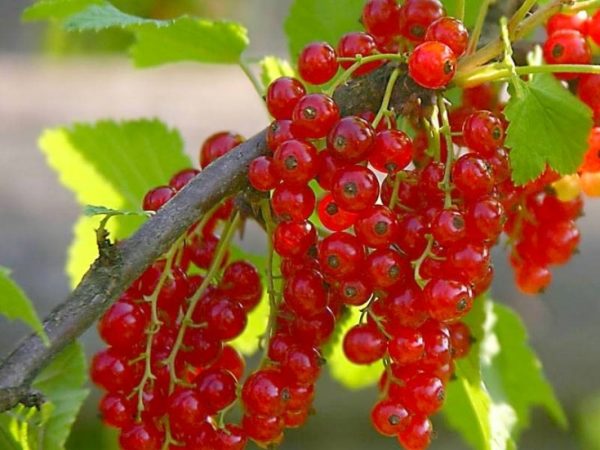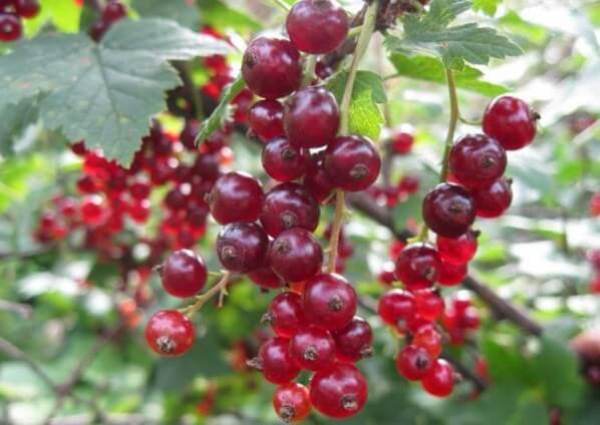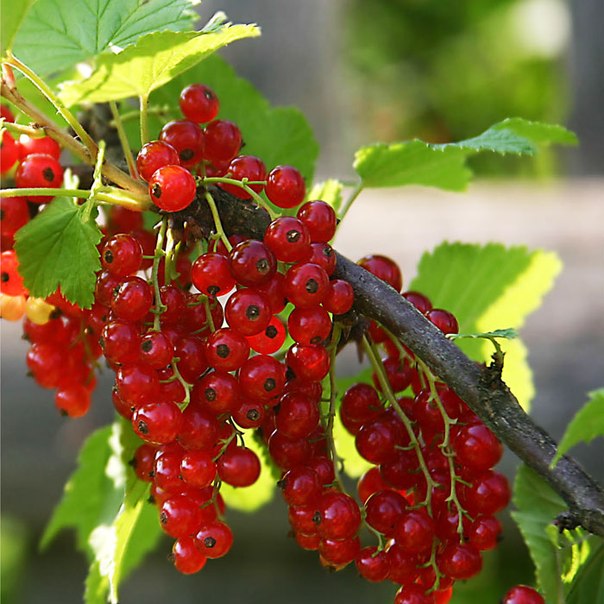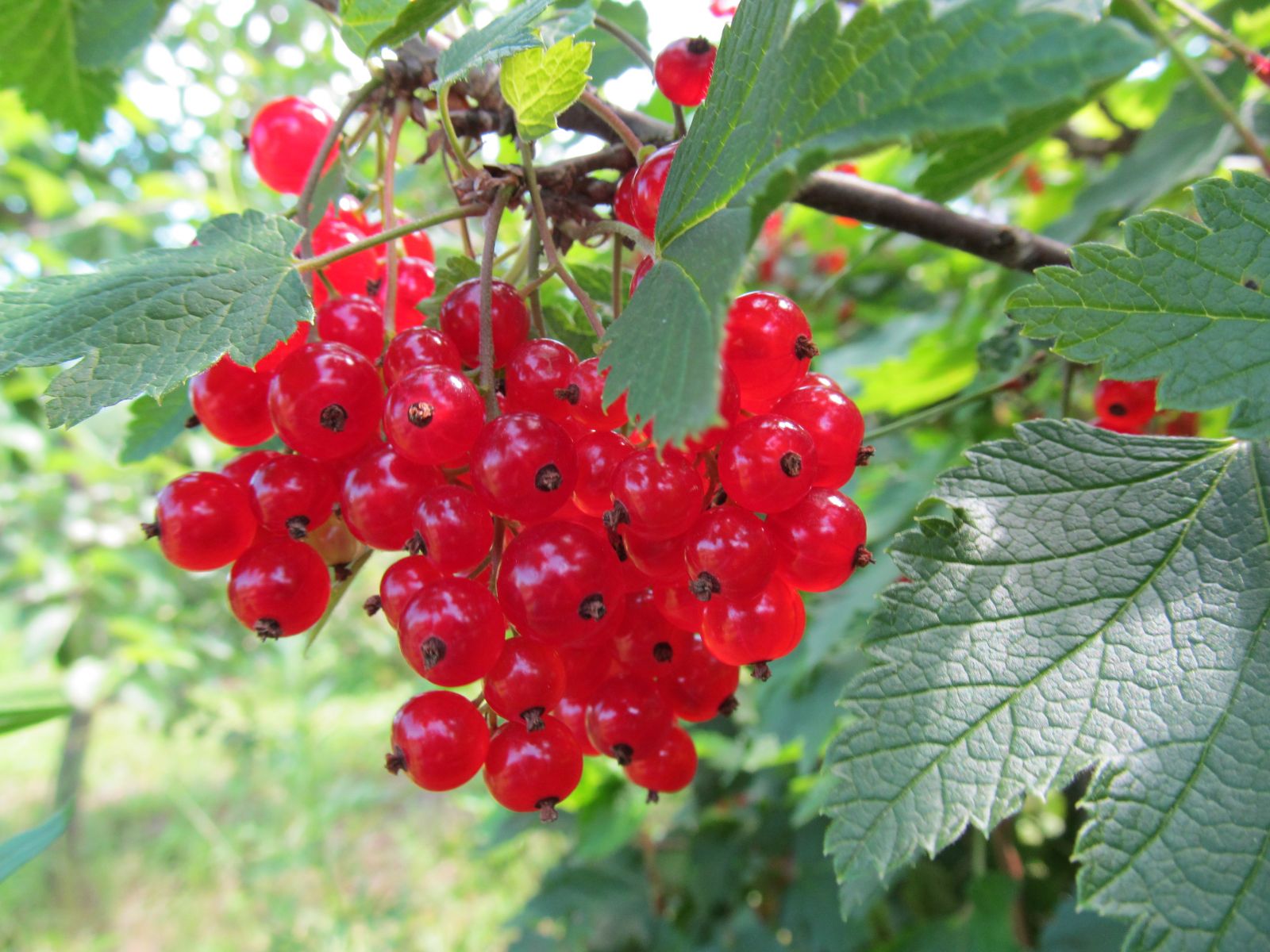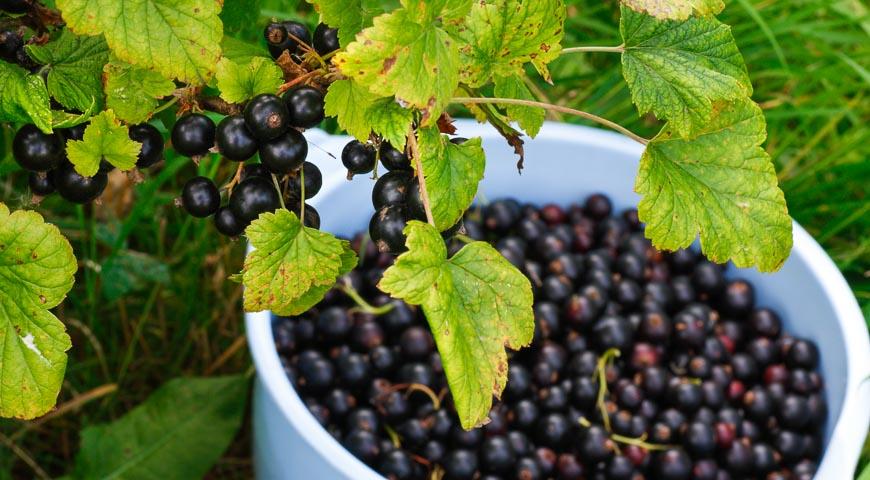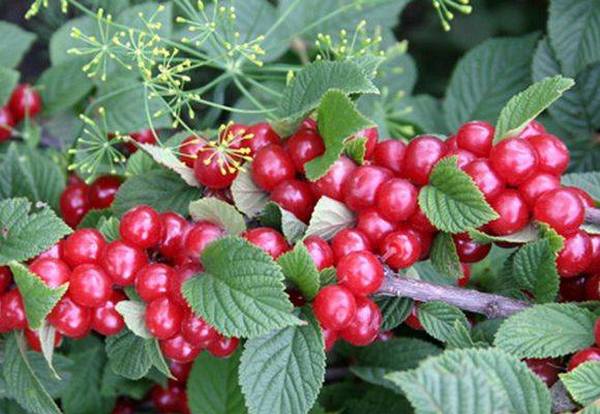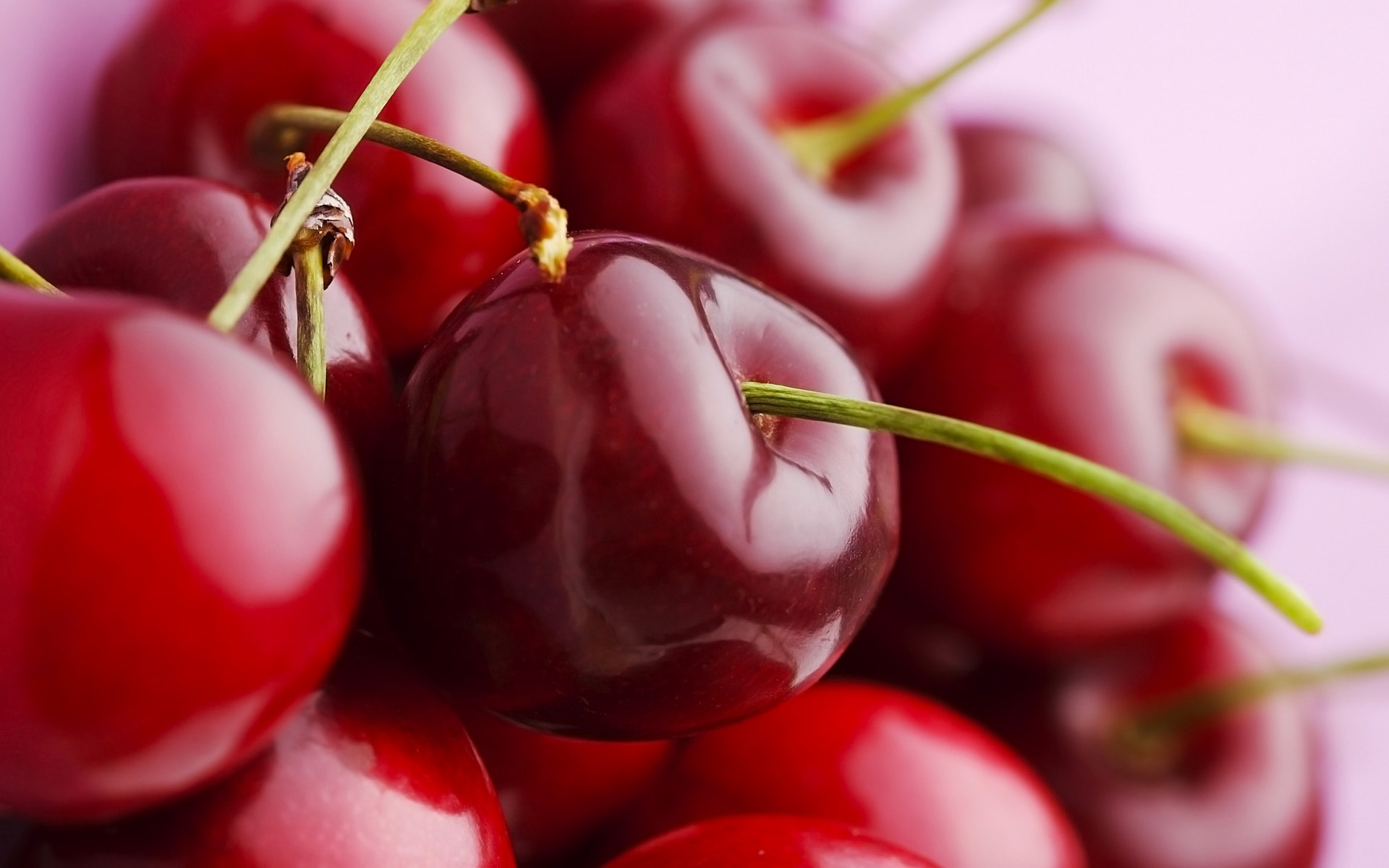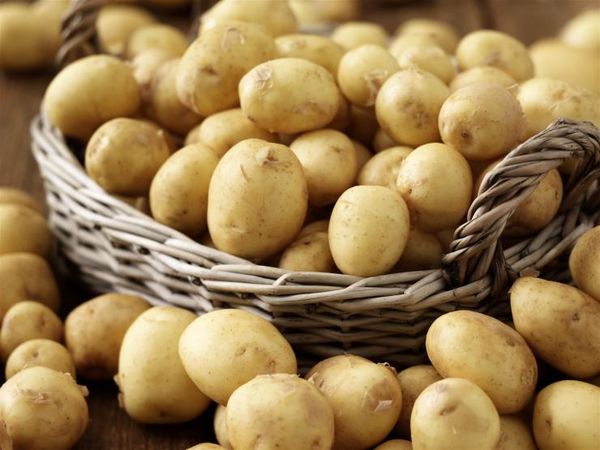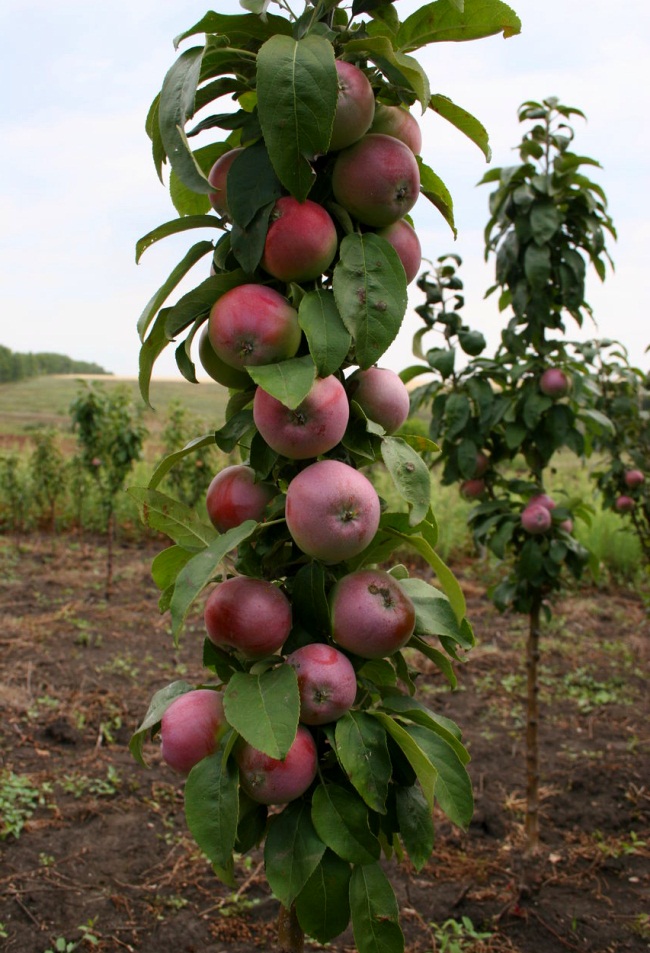Content:
Red currants are a relative novelty among fruit crops. Man could tame and domesticate her only about 500 thousand years ago. These berries have gained particular value and popularity among gardeners due to the high content of various substances useful for the human body (vitamins, trace elements), as well as unpretentiousness and ease of care.
A big plus of this fruit crop is the ability to survive at low temperatures, which allows you to grow bushes in cold areas, for example, the Moscow region or the Leningrad region.
Red currant classification
Red currants differ not only in appearance, but also in taste. It is also worth remembering that not every variety can germinate successfully in all conditions. Climatic conditions affect yields. Below we will consider the main varieties that can be successfully grown in summer cottages near Moscow.
These fruit bushes are classified according to several criteria:
- Sweetness. The taste of berries depends on the presence of sugars and organic acids in the composition. It should be noted that sweet varieties contain 4-10% of sugars in their composition. Naturally, the sourness still remains, but it is not felt that way. The presence of such acids varies from 1.5 to 4%. In the sweetest varieties, the acid does not exceed 2%. The sweetest varieties include Pink pearls, Viksne, Vika, Holland pink, Sugar, Early sweet;
- Winter hardiness. Despite the fact that the red currant is a frost-resistant plant, there are varieties that are not intended for planting in areas that are too cold. Among the most winter-hardy varieties are Natalie, Jonker van Tets, Nenaglyadnaya, Krasnaya Andreichenko, Gollandskaya krasnaya;
- There are also varieties of currant by the size of the berries. The best varieties of red currants for the Moscow region are large-fruited - these are Ilyinka, Uralskaya krasavitsa, Rolan, Cascade, Alpha;
- Culture qualify by the ripening period. For areas where autumn comes quickly, it is better to choose early species. Among the most productive early varieties, Pervenets, Nadezhda, Serpantin, Ural souvenir should be distinguished.
The main criteria for selection
Choosing a culture such as red currant for the Moscow region, first of all, attention is paid to the ripening time. If the variety is late ripening, then in the northern regions you may not get a harvest at all. Therefore, taking into account the climate, the type is chosen:
- Early varieties yield from mid-June to mid-July;
- The berries of mid-season varieties begin to ripen from 2-3 decades of July, but the currants are larger and sweeter;
- Late varieties ripen only in August. The berries of these varieties are the sweetest.
When choosing red currants for their farm, most gardeners are guided by yield indicators. And this is true, because everyone wants to get the maximum amount of tasty and healthy berries so that they can eat in summer and stock up for the winter.
The best varieties
Today you can easily get confused in a large assortment of currants, new types appear every year. To make it much easier to make the choice, below will be considered for the Moscow region the best varieties of red currants that can withstand such a climate and at the same time give the promised harvest. These descriptions are important to consider when purchasing cuttings.
Ilyinka
Large-fruited species with an average ripening period. The culture is characterized by low growth, the shoots are located straight and are distinguished by dense foliage. Inflorescence clusters are small with large berries closely spaced to each other (weight 0.6-1.6 g). When ripe, the color of the fruit is bright red; Ilyinka berries are ready for harvest in the second half of July. They differ in relatively high yields - each bush, with proper care, gives up to 5 kg of berries. Ilyinka is characterized by good frost resistance, excellent drought tolerance, and an average level of resistance to certain diseases, for example, powdery mildew and anthracnose. But at the same time, the variety is highly susceptible to damage by sawflies.
Ural Beauty
An excellent type of red currant, distinguished by the large size of the berries (weight - approximately 1.7 g). The bushes of the Ural beauty are of medium height, have abundant foliage and a compact appearance. The berries are characterized by a sweetish taste, densely packed. Refers to self-fertile varieties, the crop is ready for harvest only at the end of July. The main advantages include excellent indicators of resistance to fungal diseases, frost. This species is distinguished by a high yield (up to 15 kg per bush). The main disadvantage is the sensitivity to droughts. With a lack of moisture, the ovary crumbles, and the fruits become smaller.
Asora
A late-ripening species with good yields. The bush of the Asora variety has a spreading arrangement of branches and low growth. Currants are round, light red in color, densely located on inflorescences and have a weight of about 0.7-0.9 g. The berries are also distinguished by a pleasant sweet-sour taste and a thin skin.
They also stand out for their good characteristics against frost and damage by many diseases and insects.
Alpha
The mid-early Alpha variety with large fruits has medium height with moderate leaf density. Berries with a pronounced sourness, weighing from 0.9 to 1.5 g. They perfectly withstand cold and frost, are characterized by good self-pollination properties. You can start harvesting in early July. A big plus of a varietal bush is considered resistance to diseases and pest infestations. The most resistant to powdery mildew. Yield indicators are above average (up to 3-4 kg).
Baraba
The Baraba variety belongs to the mid-season varieties. The bush is not tall with even branches and dark green foliage. The brushes, on which large identical berries appear (up to 1.5 g), are dense and approximately 7 cm long. Red currants with a sweet and sour taste. They are characterized by good winter hardiness and average yield (up to 2.7 kg). As a disadvantage of this variety, the high probability of being affected by anthracnose and septoria should be canceled.
Viksne
One of the best varieties of sweet red currant. The share of sugar is 7.6%, but at the same time a slightly sour taste is preserved, making the taste of the berries unique. Fruit branches are about 10 cm long. The bushes are very powerful and tall. The plant perfectly tolerates drought and frost (up to -32). It is very easy to recognize the Viksne variety - by the color of the berries. They are almost cherry-colored. It belongs to medium early varieties with good yield indicators (with proper care, up to 5 kg can be harvested from one bush). The average weight of each berry is from 0.8 to 1.1 g. The disadvantages of this variety include early flowering, inflorescences may suffer from spring frosts, and the bush will not yield a crop. Also, currants of this variety are prone to damage by gall aphids.
Dutch red
Dutch red currant belongs to the oldest late-ripening European varieties. Bushes are upright tall, tall (1.3-1.5 m), compressed. The leaves look slightly elongated, the cuttings have a darkish tint. Currant berries of this variety are medium-sized purple in color with high technological qualities. The berry has a sour taste. This variety is distinguished by its unpretentiousness to germination conditions, tolerates drought and frosts well, but the harvest ripens relatively late - only in late July - early August. Another advantage of this variety is its high resistance to damage by powdery mildew and anthracnose. With sufficient watering, Dutch red currant bushes give a very large yield (up to 6 kg). It easily tolerates cold winters and has good resistance to various diseases.
Cascade
Another mid-early variety of red currant, which stands out with large berries (weight - about 1.2-1.4 g) of uniform size. Bushes are very powerful with straight shoots. On each twig (length - about 10 cm) there are about 15 coral-colored berries of the same size. The taste is sweet and sour. The variety of red currants Cascade is distinguished by high indicators of frost resistance and a good harvest - up to 3.5 kg from one bush. The harvest ripens in the first half of July. The big disadvantage of this plant is its low resistance to diseases and pests, it is important to timely carry out preventive treatment of bushes from fungal diseases.
Serpentine
This variety of currant is an early ripening variety. Serpentine is also distinguished by large currants (about 0.9-1.1 g) of bright red color. A medium-sized shrub with strong, straight young shoots. The sourness is well felt in the berries. The plant tolerates severe frosts well, but is relatively sensitive to drought. In the absence of sufficient watering, yield indicators decrease. It is very popular due to its large yields (up to 10 kg per bush) and good resistance to diseases and pests.
Natalie
One of the best winter-hardy varieties, which is recommended for planting in Moscow and other regions with a similar climate. The bushes are notable for their short stature, straight branches, and rich green foliage. Berries with a pleasant taste and a pronounced pleasant sourness. Ripe currants turn into a deep purple color. The length of the cluster of inflorescences is no more than 9 cm.
In terms of ripening, Natalie's red currant belongs to mid-season varieties. The harvest begins to ripen in mid-July. The yield is also average - up to 4 kg of berries can be obtained from one bush. The weight of each is approximately about a gram. Another attractive feature is resistance to various types of diseases. Among the disadvantages should be highlighted the active growth of young branches, which can quickly lead to thickening. Plants of this variety constantly require rejuvenation.
Versailles red
This variety is characterized by an average ripening period. The height is not too high (1-1.5 m). Straight shoots have long brushes, where large currants are densely placed (up to 1 cm in diameter with a mass of 0.7-0.9 g). Delicate wrinkled aftertaste with a slight pleasant sourness, the look has a universal purpose. Versailles red currant has an average winter hardiness; during frosty winters, additional insulation is required. From one bush, you can collect about 3-4 kg.
Pests and diseases of red currant
The main diseases that can affect the planting of red currants are:
- Reverse or terry is characteristic of all types of currants. A viral disease that spreads and is present in the sap of the plant, which allows the whole taste to be hit very quickly. It is very easy to find out by the threadlike petals of flowers and visually terry inflorescences.With a small manifestation of the disease, you can simply remove the affected inflorescences, but if there is a massive infection, then the large bush is removed;
- Septoriasis is a fungal disease that is manifested by the appearance of various compositions of brown specks on the sheets. The affected branches are removed, and the bush itself is sprayed with copper-based preparations;
- Anthracnose also applies to fungal diseases. It is very easy to recognize it: the leaves become dry, as if burned. To combat the disease, the bushes are sprayed with fungicides, the simplest examples of antifungal agents are Bordeaux liquid and copper sulfate;
- Goblet rust Is another fungal disease characterized by the formation of rust-colored bulges on the leaves. The affected leaves must be collected and burned, and the bush itself must be treated with copper-based preparations;
- Spheroteka Is a common disease in red currants, also called powdery mildew. When damaged, leaves and shoots are covered with a whitish bloom. To treat the affected bushes, a special solution is used (40 g of crushed laundry soap and 50 g of soda ash are diluted in 50 liters of water).
Insects can also harm the red currant crop:
- Aphid. This is the main pest of red currants. The insect in large families accumulates on bushes (leaves, shoots) and sucks out juices. The first sign will be the appearance of red bubbles on the back of the leaves. Then they curl up and the shoots just dry out. It is worth starting to fight such an insect in early spring by treating the bushes with a nitrophene solution (to obtain a 3% solution per 10 liters of water, 300 g of funds are taken);
- Caterpillars currant glass jars are also capable of causing great harm. They make holes in the shoots, leading to the death of the plant. Affected branches must be removed;
- Gooseberry moth. Its larvae form a white web that appears near the inflorescences, which leads to a decrease in yield.
As you can see, today there are a huge number of different varieties of red currant. Having studied their characteristics a little, you can choose a variety of bushes that are ideal for a summer cottage. But if you do not organize proper care for the fruit crops and take care of the prevention of diseases and pests, then the promised harvest will be very difficult to get.
